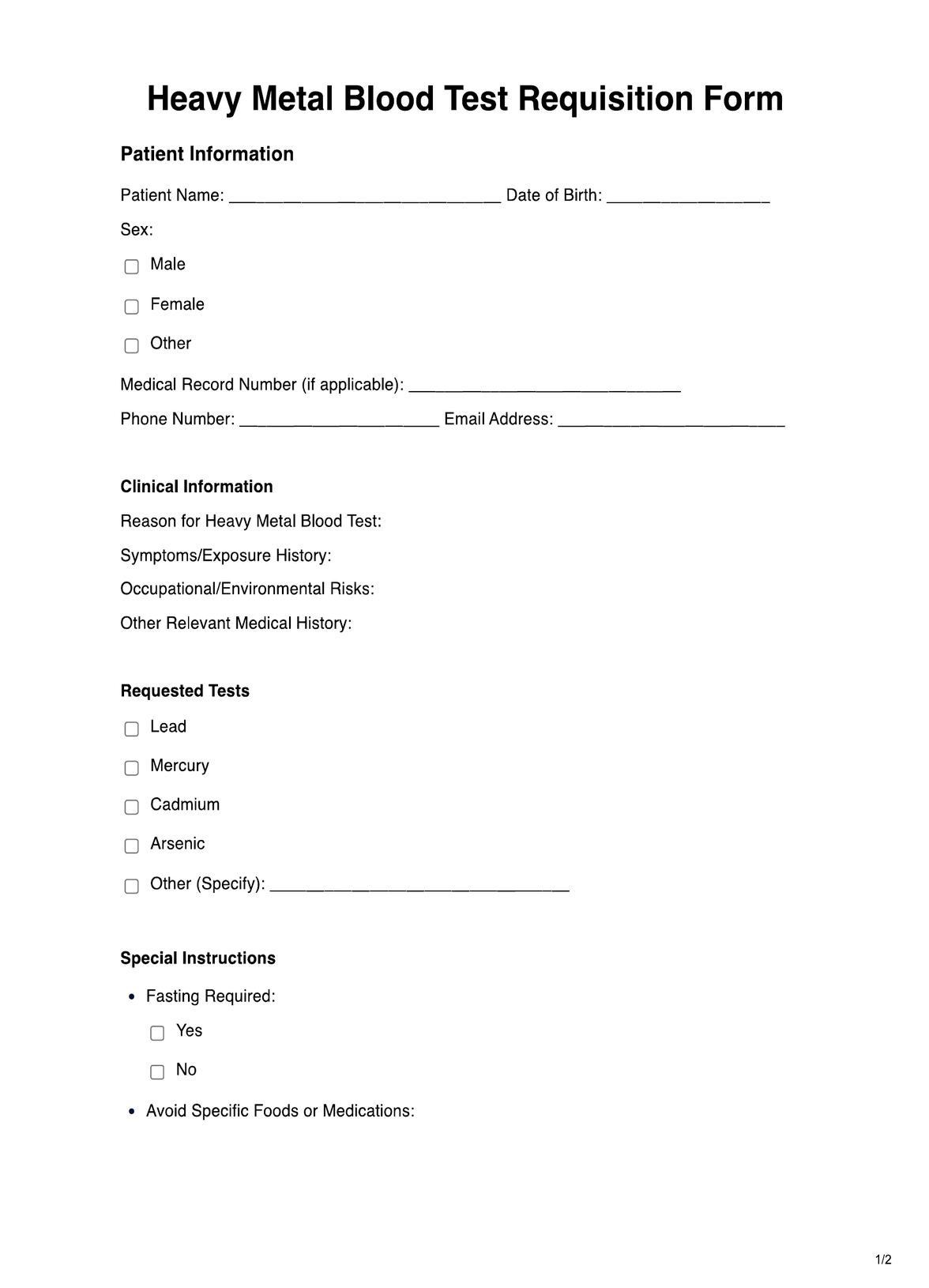Healthcare providers, occupational health experts, and environmental health agencies typically request Heavy Metal Blood Tests for individuals exposed to heavy metals or showing related symptoms.

Heavy Metal Blood
Accurate Heavy Metal Blood Tests for exposure assessment and health evaluation. Learn more about this essential diagnostic tool.
Heavy Metal Blood Template
Commonly asked questions
Heavy Metal Blood Tests are used when there is suspicion of heavy metal exposure, toxicity, or environmental contamination. They are also utilized for occupational monitoring, clinical evaluation, and public health assessments.
Heavy Metal Blood Tests involve collecting a blood sample from a patient, which is then sent to a laboratory for analysis. The results help assess heavy metal levels in the bloodstream, guiding diagnosis and appropriate interventions.
EHR and practice management software
Get started for free
*No credit card required
Free
$0/usd
Unlimited clients
Telehealth
1GB of storage
Client portal text
Automated billing and online payments











